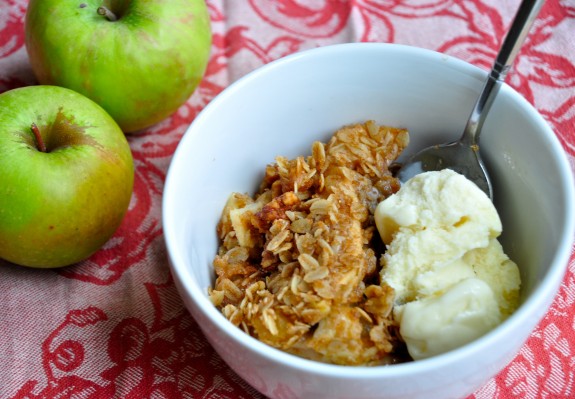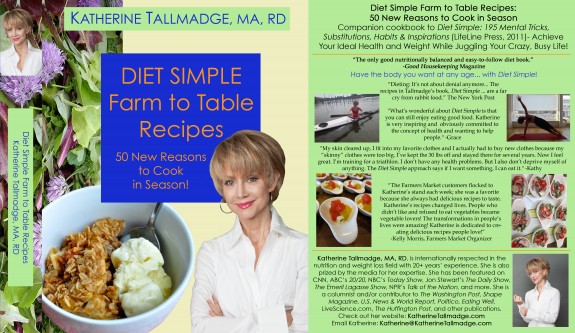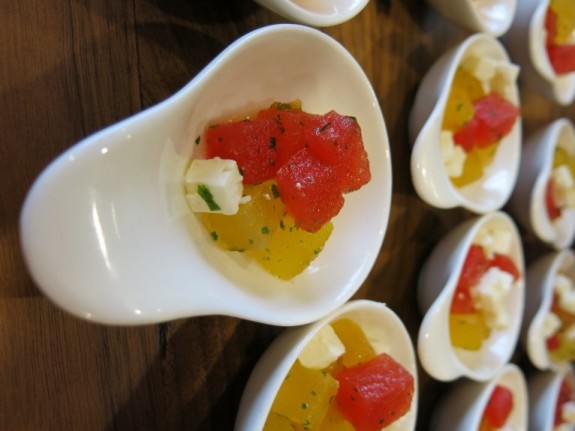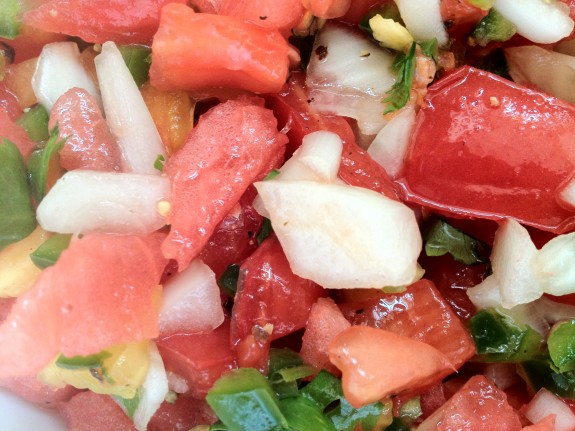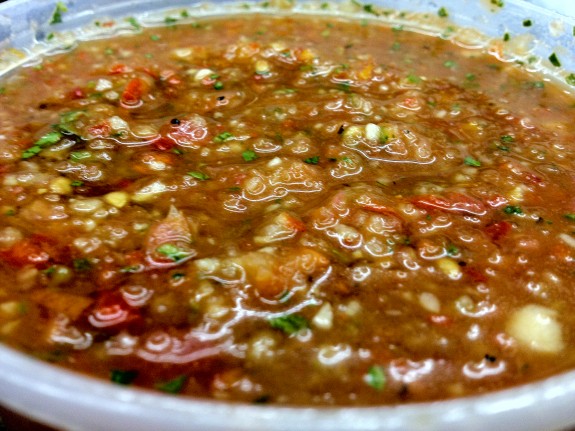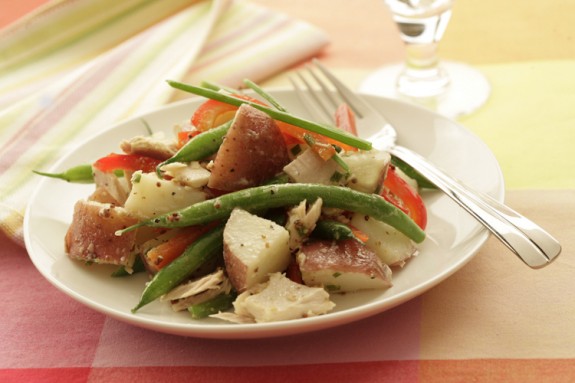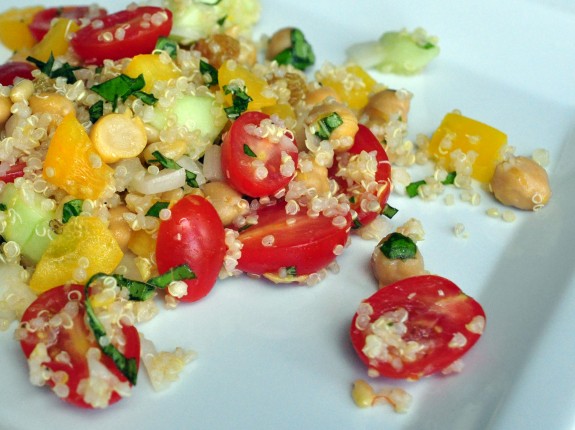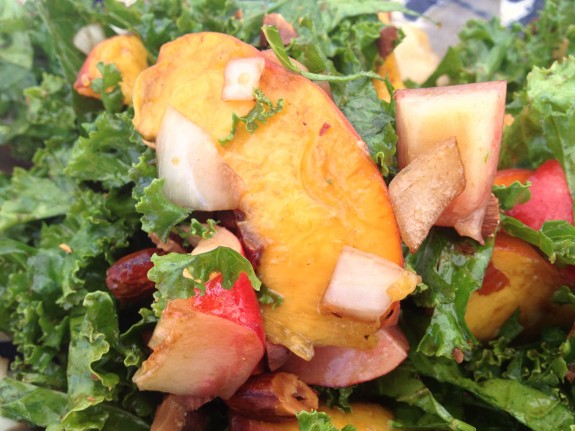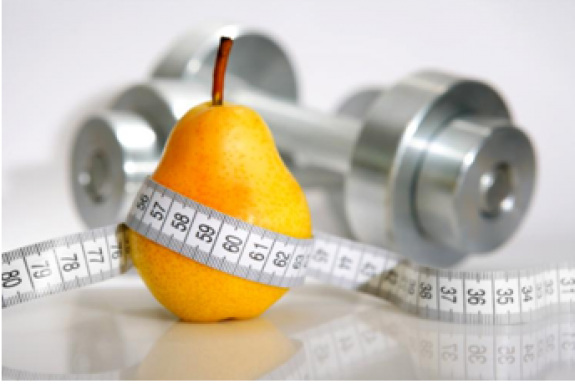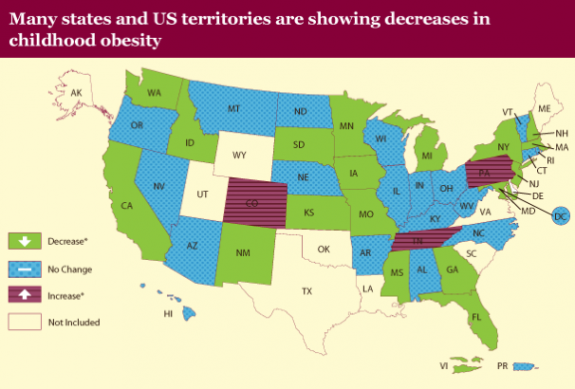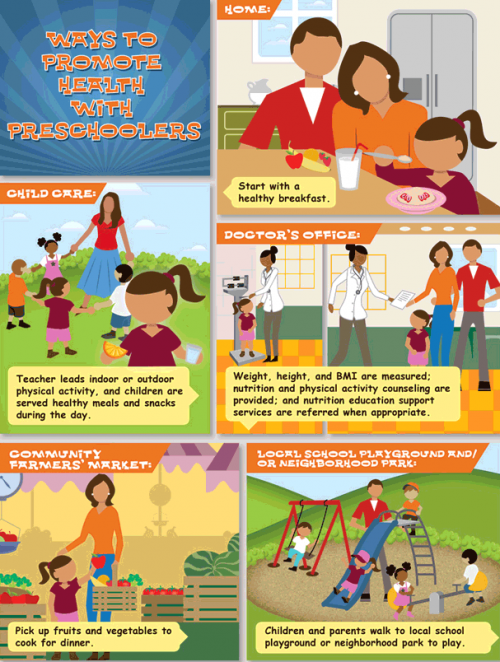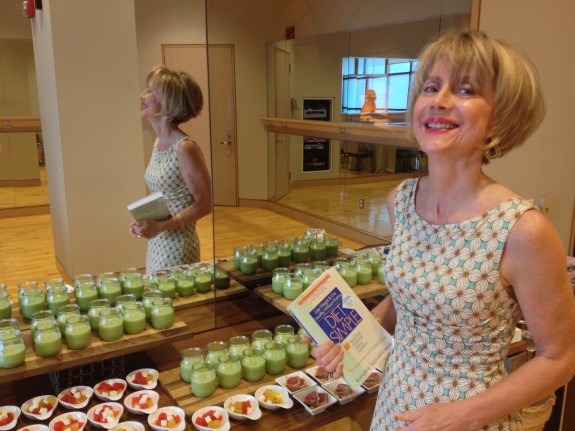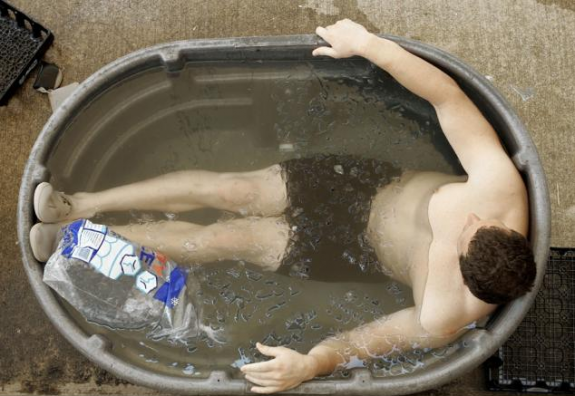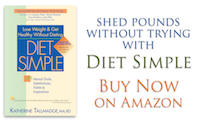Girlfriends Give Back… To Homeless Children
- At August 30, 2013
- By Katherine
- In News
 0
0
Girlfriends Give Back, an event founded and organized by WUSA-9‘s popular anchor, Lesli Foster, supports small charities that make huge contributions in the community. This year, Girlfriends Give Back is supporting The Homeless Children’s Playtime Project. It provides children without homes to call their own, the basic right every child should have: the ability to just play and just BE. But, The Homeless Children’s Playtime Project is much more than just a play space. HCPP provides weekly programs for children, offers a chance for them to learn through art, imaginative play and provides parent support, clothing, food drives, and field trips. It even advocates for affordable housing and safe shelters for all families.
“I am so personally moved by their mission,” said Lesli Foster.This event is about harnessing the power of small donations – to make an impact. It started with an idea. What if you could take what you spend on lunch for a day, a week or a month – and give it to a small charity. What if you had a reason to “opt in” to giving as opposed to “opting out.” By attending or supporting this event with a donation – it costs only $25, you can be certain that by “opting in” all the proceeds will benefit HCPP. Plus, you’ll have a great girls night out – complete with light hors de oeuvres, cupcakes, Girlfriendtini’s, free parking, and bunch of fun surprises!
“I hope you’ll take a peek at the invitation below,” said Lesli. “And, if you find this speaks to the hearts of other girlfriends, please feel free to pass it on! I’m so grateful for your time, consideration and support.”
NEIMAN MARCUS MAZZA GALLERIE,
LESLI FOSTER AND MAUREEN BRYANT
INVITE YOU TO A FUN AND FABULOUS EVENING
JOIN US FOR A NIGHT OF MANICURES AND MINI MAKEOVERS FEATURING THE TRENDIEST NEW COLORS
FOR A FRESH FALL FACE
ENJOY SIPS, BITES, AND BEATS
5300 WISCONSIN AVE, NW
TUESDAY, SEPTEMBER 10
6PM TO 8PM
COSMETICS, LEVEL ONE
100% OF PROCEEDS WILL SUPPORT
THE HOMELESS CHILDREN’S PLAYTIME PROJECT
TO PURCHASE YOUR TICKET AND RESERVE YOUR SPACE:
4 Steps for Strengthening Muscles: Some Surprising News
- At August 21, 2013
- By Katherine
- In Articles, News
 14
14
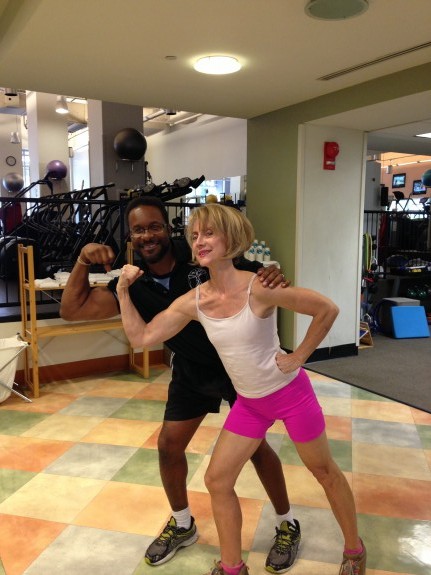
I’ve been asked to share my personal regimen. Well, here it is – throughout the article, but also, look at the very end… Along with some personalized strategies for YOU!
One of my 50-something clients, who lost twenty pounds with a few “Diet Simple” tricks, increased pedometer steps, and weight training, confided in me that she feels sexy for the first time in years! On the tennis court, she performs better, is more flexible, stronger and quicker. Who could ask for more in your 40s, 50s, 60s – or even older?
My clients regularly ask me, “How do I maximize my workouts to gain muscle as quickly and effectively as possible?”
My answer: “What you eat and when you eat it profoundly improves your ability to build muscle mass and strength, and new surprising studies show an ancient beverage and a simple stretching routine can make a huge difference, too. Let me explain…”
1. Your Workout
While nutrition is important, the quality of your strength training workout is a key factor for building muscle mass. The National Institute on Aging recommends strength training all of your major muscle groups at least three times a week for 30 minutes. I encourage all my clients to get some kind of strength training so that when they lose weight, they not only look more toned and have more strength (who wants to be a flabby skinny person?), they’re healthier. This can be accomplished by working with a skilled trainer, but also through vigorous yoga and pilates – whenever there is resistance and you work your muscles to exhaustion – that is, you can’t do just one more pushup – you’re building muscle.
It’s also important to build muscle because the more lean muscle you have, the more calories your body burns because muscle mass increases metabolism. That’s why a man who weighs the same as a woman can eat so much more, and will lose weight more easily. He has relatively more muscle so he burns more calories, even at rest!
Studies of 80-year-olds show muscular strength can mean the difference between independence and a nursing home… it improves balance, walking, and reduces falls.
But it’s not easy to build muscle for a variety of reasons.
First, muscle mass declines as you age, starting in your mid 30s. An average person will lose five to seven pounds of muscle between age 35 to age 50 due to disuse. For every pound of muscle lost, you lose the capacity to burn 35 to 50 calories per day. That means if you’ve lost seven pounds of muscle by the age of 50, at 50 calories per muscle, that’s 350 calories you can’t eat just to prevent weight gain, let alone lose weight.
Second, weight loss causes muscle loss. When you lose weight, about half of what you lose is muscle -though you can minimize muscle loss by eating right (so read on!). This makes it even harder to keep the weight off because you’re reducing your muscle and therefore your metabolism as you lose pounds.
This brings us to the obvious: Building muscle as you age, eating the right kinds of foods to make that happen – and to minimize muscle loss as you lose weight – is essential to keeping lean.
Now for the nutrition…
2. Protein
Protein is essential for healthy living. It is one of the most important nutrients in the human body, second only to water. Bone health, muscle function, muscle strength, muscle mass and immune function — all are impaired with a low protein intake. But how much protein do we need?
New research has found that eating the right amount of protein – and at the right times – is essential not only for your health, but also for effective muscle gain and weight loss. Eating enough protein while losing weight is more likely to minimize muscle loss and maximize fat loss. Keeping muscle stores high is critical as losing muscle decreases resting metabolic rate, making it harder to maintain a healthy weight and lose body fat.
The National Academy of Sciences, in a recent report, recommended Americans eat at least 15% of their calories as protein but never exceed 35 percent, as that may be when adverse symptoms begin to appear (Low carb diets are often as high as 80% protein, and have many adverse health consequences).
If you’re losing weight or are worried about muscle or bone loss, consider increasing your protein.
How Much Protein? A personalized formula: The studies of aging populations find about 1.2 grams of protein per kilogram of (2.2 lbs is 1 kg) helps to reduce age-related muscle – and bone – loss. This amount should also be adequate for you to maximize your workouts, especially if you are in your mid-30s or older. Though some in the body-building community believe you can go as high as 1.6 grams of protein per kg of body weight. You may also need this higher amount if you’re sick or bed-bound to minimize muscle loss.
Example: So, if you weigh 150 pounds, this means the amount of protein you should eat is: 150 lbs (divided by 2.2 lbs per kilogram) = 68 kg; 68 kg X 1.2 grams of protein per kg of ideal body weight = 82 grams protein daily. For the maximum amount of protein, multiply 68 kg X 1.6 grams of protein per kg = 109 grams of protein per day
Where Do I Get Protein? Protein can be found in a wide range of foods. Animal protein is in seafood, lowfat dairy, poultry and eggs. Vegetarian protein can be found in legumes, soy, vegetables and grains. And while it’s true that high-protein foods often bring fat and calories along as uninvited guests, it doesn’t have to be that way. The lowest-calorie animal protein sources are the leanest. Go for seafood or poultry with no skin. Skim/lowfat milk, nonfat/lowfat yogurt, lowfat cheeses are also great options. Soy products also provide great low-calorie options and are high quality proteins similar to meat.
Toss four ounces of poultry or seafood or 12 ounces of spiced tofu into your salad and gain 28 grams of high-quality protein and no more than 150 to 200 calories.
8 ounces milk/yogurt: 8 grams protein
8 ounces Greek Yogurt: 20 grams
1/2 cup cooked beans/tofu: 8 grams protein
1 ounce fish/chicken/cheese (the leaner the meat, the more protein and the fewer calories): 7 grams protein
1 large egg: 7 grams protein
1/2 cup cooked or one ounce dry (1 slice bread) grain: 3 grams protein
1/2 cup cooked or one cup raw vegetables: 2 grams protein
3. Timing is Everything!
Eat a food or beverage high in protein (with some carbohydrate) 20 minutes before, and again, immediately after your strength training workout or after a vigorous cardiovascular workout, such as tennis, swimming, or kayaking, or even just a long walk. When you work out, you break down your muscles. Taking in protein when your muscles are being broken down and are metabolically active will build your muscle mass and strength more effectively. You also need to make sure you hydrate yourself properly!
My personal regimen includes drinking some skim milk before my workout – all you need is about 1/2 cup – and eating yogurt immediately after my workout or after yoga. If I forget the yogurt, I’ll run to the nearest coffee shop after my workout and buy a skim latte for my protein, which contains milk, or soy milk. But, I like yogurt the best: It contains important probiotics which keep your gastrointestinal tract healthy. It also contains high quality protein, carbohydrate, calcium, potassium and magnesium – important nutrients which you need to replenish your muscles. Eating immediately after your workout could have other benefits: It prevents the “extreme hungries” some people feel after heavy exercise, and it could prevent muscle cramps, according to a client who used to have muscle cramps regularly until she started eating yogurt after her exercise.
Current thinking among protein researchers is that protein is most bioavailable for your muscles (and your cells and organs) if eaten in relatively small quantities through the day. For women, 20 grams per meal is what the body can utilize efficiently. For men, that can go up to 30 grams per meal. So, with my personal protein goal being 60 grams per day, I’m sure to have about 20 grams in the morning, 20 grams mid-day and about 20 grams in the evening, as my body may not benefit from more at one sitting.
If you’re a man who needs 100 grams per day, you could spread out your protein intake through the day to 4 meals – separated by at least two hours – of about 25 grams each. So an 8 ounce steak at night, containing 56 grams of protein, just won’t cut it!
A new study found tea improves muscular strength. Tea? Apparently, as we age, oxidative stress and inflammation cause age-related muscle and bone breakdown. Tea’s healthy compounds, called “polyphenols,” reduce oxidative stress and inflammation, preventing this breakdown, and even improve muscular strength and bone mass. In a recent study funded by the National Institutes of Health’s National Center for Complementary and Alternative Medicine, when post-menopausal women with osteopenia (the beginning of osteoporosis – brittle bones) were given tea and/or Tai Chi exercises, after six months, the tea alone caused an improvement in muscle strength and bone-building biomarkers. Learn more about the health benefits of tea… So did the Tai Chi alone – certainly not a rigorous or impactful exercise, which we’ve been taught all along was necessary for muscle and bone building! Apparently, Tai Chi also reduces inflammation and oxidative stress.
With the amazing results of this study in mind, it makes sense that any foods high in anti-oxidants and anti-inflammatory compounds, such as fruits and vegetables, may help improve bone and muscle strength. And, if Tai Chi helps improve bone and muscle mass, shouldn’t other forms of meditation or meditative exercise, such as yoga? More research is needed to establish the facts, but these results certainly are promising.
See more specifics of my own personal regimen below!

KT walking in the’hood! In addition to some facts about my own regimen written throughout this article, read more about my personal regimen below… (Photo by Zach Lipson)
In the meantime, I’m drinking tea every day, doing vigorous yoga at least 2 to 3 times a week, working with a trainer once a week, walking A LOT to keep body fat down, at least 10,000 pedometer steps is a daily average, in my posture-improving MBT shoes, from Comfort One Shoe Store (ask for Manager, Shawn O’Neill), eating plenty of yogurt, and my own delicious batch recipes filled with healthy foods found in Diet Simple and Diet Simple Farm to Table Recipes (only $4.95) to keep my muscles and bones strong, and my body in shape!
Summer Peach Crisp with Nuts, Dried Fruit and Ginger
- At August 20, 2013
- By Katherine
- In Recipes
 0
0
Today is the 11th “Katherine’s Market Recipe,” all of which are designed to be delicious, easy, quick, family-friendly, nutritious (heart-healthy & diabetes-friendly), and to highlight produce found at our local Farmers Markets this week. At your Farmers Market, you’ll find produce picked at peak ripeness, which means maximum flavor, texture and nutrition. You’re also helping save the environment when you buy at your Farmers Market. Here’s how…
For my “Autumn Apple Crisp with Nuts, Dried Fruits, and Ginger,” I recommend you buy the apples or pears at Georgetown’s Rose Park Farmers Market (your last chance this year) on Wednesday, or Dupont Circle’s Fresh Farm Market (open year-round) on Sunday.
Katherine’s Summer Peach Crisp with Nuts, Dried Fruit & Ginger
By Katherine Tallmadge, M.A., R.D.
This will become a favorite holiday dessert – delicious, but quick and simple, too. And, heart healthy – using predominantly whole grains and nut oil instead of butter – and filled with fruit and nuts.* This Apple Crisp is very versatile with its main ingredients. Use a crunchy, tart Fall Apple, an Anjou Pear, or a combination of both. Use any dried fruit, your favorite nut, and a nut oil for maximum flavor.
Serves 12
Filling:
½ Cup Pure Maple Syrup
½ Cup Raisins, Dried Cranberries, or a mix of both
2 Tablespoons Fresh Squeezed Lemon Juice
1 Tablespoon Minced Candied or Crystalized Ginger, or less if you like it less strong
2 Tablespoons All-Purpose Flour
3 pounds Seasonal, Ripe Peaches, peeled and thinly sliced
Topping:
1-1/2 Cups Old Fashioned Rolled Oats
½ Cup Chopped Walnuts, Pecans, Hazelnuts, any favorite Nut – or a mixture**
½ Cup Brown Sugar
1/3 Cup Whole Wheat Flour*
½ teaspoon Ground Cinnamon
1/3 Cup Walnut Oil, any Nut Oil,** or Canola Oil
Preheat oven to 350 degrees F.
Prepare filling: In a large bowl, mix the maple syrup, dried fruit, lemon juice, ginger, and flour. Add the peaches and mix well. Pour into a 9-by-13-inch baking dish.
Prepare Topping: Mix the oats, nuts, brown sugar, whole wheat flour, and cinnamon. Add the oil and mix until the topping is moist. Pour over the filling in the baking dish.
Bake for 45 to 50 minutes or until the apples are tender and the crumble is golden brown. Let stand for 10 minutes until serving
300 calories per serving.
“Katherine’s Summer Peach Crisp with Nuts, Dried Fruits, and Ginger” is adapted from a recipe in “Eating Well” Magazine.
*A whole grain – whole oats and whole wheat flour – has three parts: bran, germ and endosperm. The bran and germ contain fiber, Vitamin E, B vitamins (thiamin, niacin, riboflavin and pantothenic acid) minerals (calcium, magnesium, potassium, phosphorous, sodium, selenium and iron), protein, essential oils, antioxidants and phytochemicals (plant substances that may protect health). The endosperm contains mostly starch with a little protein and very few nutrients. When a grain is refined, turning whole wheat flour into white flour or brown rice into white rice, only the nutrient-poor endosperm is left. The heart-healthy, cancer-fighting riches found in the bran and germ are lost. Learn more about whole grains…
**Nuts – Every time a new study comes out about nuts – any nut – it’s positive news. Nut eaters around the world have fewer heart attacks, and we know that most of the protective nutrients are in the oil of the nut. While you already know each nut has a different look and flavor, each nut also has its own unique nutritional characteristics. For instance, almonds are the highest in protein and Vitamin E, and the lowest in artery-clogging saturated fat. Walnuts are the only nut with omega-3-fatty acids. Pecans have the highest antioxidant content. Pistachios contain lutein, a compound which may significantly improve eye health. ALL nuts are good for you. My favorite: Italian Hazelnuts!
Simple, Sumptuous, Seasonal Summer Recipes
- At August 20, 2013
- By Katherine
- In News, Recipes
 0
0
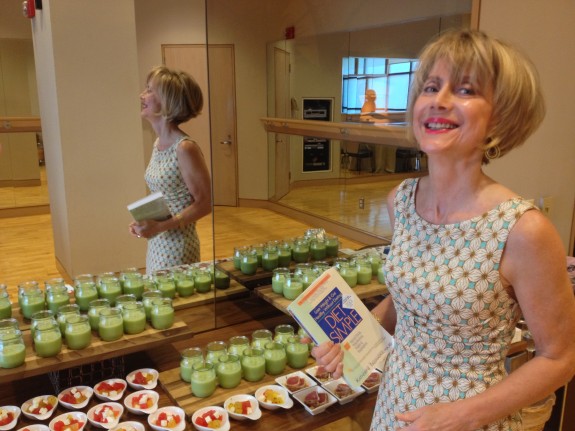
Katherine presenting: "Nutrition for Heart & Brain Health" at the Four Seasons Spa featuring recipes from "Diet Simple Farm to Table Recipes," uniquely prepared by Four Seasons' Hotel Executive Chef, Douglas Anderson, like Melon Chunks with Crumbled Feta and Fresh Mint, Cool Cucumber Soup, Seared Ahi Tuna with Wasabi Vinaigrette (photo by Viggy Parr)
Summer is a season filled with beauty!
Beautiful, sunny weather, beautiful afternoons spent with family and friends, and, of course, beautiful fresh produce straight from the garden. Summer is bursting with an abundance of delicious ingredients like juicy peaches, sweet melons, cool cucumbers and heirloom tomatoes. Take advantage of summer’s bounty with these quick and easy recipes… These recipes – and so many more – are found in my new Diet Simple companion cookbook:
Diet Simple Farm to Table Recipes: 50 New Reasons to Cook in Season!
ONLY $4.95! NEW PRICE!
Available soon as an e-book and paperback: $14.99
Melon Chunks with Crumbled Feta and Fresh Mint
Fresh Summer Salsa with Watermelon
Silvestro’s “Italian” Gazpacho
Kjerstin’s Chicken Salad with Sweet Melon, Peaches, and Toasted Walnuts
Salad of Fingerling Potatoes, Green and Yellow Beans with a Lemony-Garlic-Herb Dressing
Zucchini Ribbons with Fresh Lemon Vinaigrette
Fresh Kale and Summer Peach Salad with Toasted Almonds and Balsamic Vinaigrette
Summer Peach Crisp with Nuts, Dried Fruit and Ginger
Dark Chocolate Dipped Seasonal Fruit & Fruit Popsicles
These recipes and so many more can be found in Diet Simple Farm to Table Recipes: 50 Reasons to Cook in Season!
ONLY $4.95 (Available soon as an e-book and paperback for $14.95)
8 Steps to Determine: Are YOU Dangerously Overweight?
- At August 12, 2013
- By Katherine
- In Articles, News
 0
0
My clients regularly ask me: Could the height/weight charts in doctors’ offices be correct?
Really?
My answer: That depends…
(This article was also published in The Huffington Post)
Don’t use height/weight charts alone to determine your ideal body weight. Researchers designed the latest body mass index (BMI) charts for use in combination with additional personal information. A group of scientists from the National Institutes of Health (NIH) who specialize in how weight affects health crafted the guidelines after reviewing hundreds of studies conducted over the past several decades — only then did the experts make their recommendations to health professionals.
The guidelines help physicians, and registered dietitians like me, evaluate and make recommendations for clients. But you can also use the BMI charts, along with your doctor’s advice, to help you decide what your appropriate weight should be.
8 Steps
- Determine your Body Mass Index (BMI), or the relationship between weight and height that researchers have associated with body fat and health risk. BMI is calculated by dividing your weight in kilograms by height in meters squared (kg/m2). But there is a BMI chart (below) so you don’t have to make the calculation yourself!
- If you are categorized as “overweight,” it is ideal for you to lose weight. That said, weight loss treatment is particularly important – and recommended – when you have two or more health risk factors, such as smoking, inactivity. I would define “inactivity” as under 10,000 pedometer steps daily (averaged over a week), or any of the following: High blood pressure, low HDL (good) cholesterol, high LDL (bad) cholesterol, high triglycerides (blood fat), impaired fasting glucose, a family history of premature heart disease, or a high waist circumference – measured at the belly button – of greater than 35″ for women or 40″ for men. The presence of abdominal fat is correlated with disease risk. We used to think body fat was inert, but it isn’t, it’s toxic! Fat tissue produces hormones and pro-inflammatory chemicals, which regulate metabolism, the immune system, inflammation, the progression of artery hardening, and the development of cancers, so that when you have less body fat, you get many biological benefits.
- If you are categorized as “obese,” weight loss treatment is recommended,
- Your initial weight loss goal should be to reduce body weight by about 10% from your starting weight. This should take about six months, depending on how much you have to lose. You can lose one-half to three pounds per week safely (assuming your calorie intake is appropriate, the more cardiovascular exercise you do, the faster you can lose),
- If more weight loss is needed, another attempt at weight reduction can be made,
- After the desired weight loss is achieved, a weight maintenance program consisting of dietary therapy, physical activity, and behavior therapy should be continued indefinitely,
- You will need to follow lifestyle therapy for at least six months, according to the NIH guidelines, before your doctor prescribes drug therapy or surgery. Though the safety of drug therapy has not been established and 50% of surgery patients re-gain the weight,
- For the very obese, with a BMI over 40, or a BMI over 35 with significant adverse health conditions, obesity surgery may be an appropriate option.
NOTE: Highly muscular people, usually professional athletes or body builders, may register as “overweight,” but that may be because of high muscle mass, instead of fat. More muscle is not generally thought of as unhealthy, so if you’re categorized as “overweight” because you have more muscle, weight loss would not be recommended in these cases.
Obesity Rates Declining? Nothing Short of Miraculous!
- At August 10, 2013
- By Katherine
- In Articles, News
 0
0
I was asked by the newly launched Washington Post TV’s “On Background” to discuss last week’s news reports of the first decline in childhood obesity in decades. Childhood obesity decreased in 19 states, according to the latest Centers for Disease Control data. This modest decline is nothing short of miraculous because overall, America’s food and physical activity environment seems worse than ever. Calorie-dense snack foods and fast foods are everywhere – easily and cheaply available. Children and adults spend even more time sitting in front of computers, televisions, in classrooms and cars than just a few years ago. This reversal means families, parents, caretakers, teachers, and schools are making huge efforts to overcome these negative influences.
Reversing obesity in our culture, where overweight is the norm (2 out of 3 adults and 1 out of 3 children are overweight or obese), takes effort ; it’s not an accident! Adults are making better – harder – choices for children. Americans may be slowly internalizing the need for healthy eating and exercise. Just as smoking was once considered normal adult behavior, we’re gradually realizing that mindful meals and physical activity must be made a societal norm. And that’s great news… for children, for their families, and for our country, which spends billions of dollars annually on obesity and its related diseases, including type 2 diabetes, heart disease, cancer, and more.
“Obese children are more likely to become obese adults and suffer lifelong physical and mental health problems,” according to the CDC. “Obesity rates in low-income preschoolers, after decades of rising, began to level off from 2003 through 2008 and now are showing small declines. However, too many preschoolers are [still] obese,” continued the report.
Are you dangerously overweight? Find out by checking out my 8 Steps!
Some reasons given for the successful reversal of obesity:
It seems small, simple changes have been responsible for this amazing improvement in the health of children. The power of small changes is described in my Diet Simple chapter: “Easy Solutions for Your Kids,” with tons of ideas easily integrated into your family life. Just adding fruits and/or vegetables at each meal or 15 extra minutes of daily physical activity can make a huge difference in a child’s health and weight. For fun, easy recipes and tips, buy Diet Simple: 195 Mental Tricks, Substitutions, Habits & Inspirations, and for more recipes, buy Diet Simple Farm to Table Recipes.
Katherine Featured on CBS Evening News, 2010
Are you dangerously overweight? Find out by checking out my 8 Steps!
Katherine’s Ten Commandments for Flat Abs This Summer
- At July 31, 2013
- By Katherine
- In Articles, News
 1
1

Katherine Presenting "Achieve Your Ideal Health and Weight While Juggling Your Crazy, Busy Life!" exclusively for the Four Seasons Spa
Have you relegated your best suits, bathing suits and skinny jeans to the dark recesses of your closet? Aren’t you tired of going undercover every summer to avoid exposing your less-than-supple body? Wouldn’t it be nice to have beautifully defined arms, legs, and a flatter belly?
So, before you dump on (or just plain dump) your workout for not giving you killer abs and the slim body you dream of, you should know the real culprit could be your diet-and even your high-stress lifestyle.
When it comes to going from fat to flatter abs, new research shows that what you eat is just as important as how–or even how much– you work out. And lifestyle counts, too, because while stress doesn’t just mess with your head-it can also induce a pooch. And that killer work-out? It may not be slimming your body the way you hope!
As a longtime weight-loss specialist, I can assure you that a slim body and flat abs aren’t an impossible dream or something seen only on fitness models. In fact, I’ve helped thousands of people (myself included) whittle flabby middles into beautiful flatter bellies by combining an eating plan especially designed to decrease fat and bloating with aerobic exercise, strength training and stress management.
With my plan, you’ll build a show-off body that is the center of attention when you’re wearing a fitted business suit, a bathing suit, a pair of skinny jeans–or nothing at all!
Let’s Get Started … with Katherine’s Commandments…
I. Diet Simple Tip #77: Do Some Calorie Shifting
Americans traditionally eat a large dinner – one that we attack with zeal. Is it any wonder we gain so much weight? Rearrange your days’ calories so you’re eating one third in the morning, one third mid-day and no more than one third at night. For most of you, that means you’ll be eating a larger breakfast – about 600 to 700 calories, and a lighter dinner than usual.
Bottom Line: Lose 30 pounds
Eating relatively light dinners at night, and shifting more of the calories to breakfast and lunch – so that you’re eating 2/3 to 3/4 of your calories before dinner – and you arrive at dinner just barely hungry, can easily save you 300 calories a day
II. Diet Simple Tip #28: Shop at the Farmers’ Market
I’ll never forget my Grandmother’s home-grown tomatoes. They were soft, plump, sweet, deep red, and still warm from the day’s sun – the kind you only get fresh from the vine. At your farmers market, you’ll find fruits and vegetables picked at peak ripeness, which means maximum flavor, texture, and nutrition. And when food tastes better, you eat more. That’s a SCIENTIFIC FACT!
Bottom Line: Lose 36 pounds
Adding salads, vegetable soups and fruits to your daily meals will help you cut back on other more fattening foods. Studies show starting each meal with a salad saves at least 100 calories – and that’s without dieting! For a summer treat, try my Gazpacho or Cool Cucumber Soup… in my new Diet Simple Farm to Table Recipes
III. Diet Simple Tip #36: Hit the Ground Running
No one believes me when I tell them they can burn 600 calories before work or before even waking up! They’re even more surprised when I explain that’s the best way to do it. Try this: Wake up in the morning. Yawn. Roll out of bed, go to the bathroom, have a drink of water, and slip on some exercise clothes. Start moving. Right away! Exercising first thing in the morning is one of the best things you’ll ever do for yourself. And before you know it, it’s over with before you’re even awake!
Bottom Line: Lose 28 – 42 pounds
All it takes is thirty minutes in the morning: just walking briskly will burn up to 28 pounds in a year. Another great thing about morning exercise: no midday heat to contend with. Wear a pedometer and make sure you’re getting at least 10,000 steps a day. Men LOVE the Nike Fuel Band… Women’s favorite: the Fitbit!
IV. Diet Simple Tip #43: Listen When You Chew
Actually, you don’t have to go that far. But you should focus your entire attention on your food so you enjoy and savor every bite. When you eat on autopilot, when your mind is somewhere else, you don’t enjoy your food very much. More important, “mindless” eating generally turns into overeating and doesn’t provide physical or psychological satisfaction.
Bottom Line: Lose 21 pounds
Once you start focusing your attention on the food in front of you – relax and take a few deep breaths before eating – you’ll almost automatically eat a little less. In fact, even if you leave only a few extra bites on your plate, it could add up to a savings of 200 or more calories daily
V. Diet Simple Tip #45: Write it and Lose It
The food diary is the main tool for self-examination of your eating habits. Socrates told us that the road to wisdom is to know ourselves. This is never more true than in your eating habits.Research shows self-monitoring – keeping a food journal in this case – is the most highly correlated behavior for successful behavior change and weight loss.
Bottom Line: Lose 23 pounds
If keeping a journal enhances your attentiveness and helps you eat less here or there or even think twice about that vending machine candy bar, you could save 220 calories per day.
VI. Diet Simple Tip #76: Fight the Beast
Hunger is pretty rational. It tells you when you need to eat and when you’ve had enough. Cravings, on the other hand, are cruel and capricious. They always demand more, more, more! Using a scale of 0 – 10, rate your body’s hunger signals before and after eating.
Bottom Line: Lose 30 pounds
If you listen to your body signals and regularly eat when your stomach says you’re hungry and stop when you are no longer hungry, before you are too full, you save at least 300 calories a day.
VII. Diet Simple Tip #103: Cook More Than You Can Eat
A strange suggestion to find in a weight loss book? Believe it or not, it’s among the best approaches for shedding extra pounds because the foods you cook today become nutritious leftovers for later. Having delicious, healthy food at your fingertips when you need it can save you hundreds of calories each and every day because you’ll be less likely to irrationally grab high-calorie restaurant or to-go meals and fattening snacks.
Bottom Line: Lose 30 – 42 pounds
A meal cooked at home, including those delicious leftovers (“Batches” in Diet Simple), can save you 300 to 400 calories at dinner. Get tons of ideas in my new Diet Simple Farm to Table Recipes.
VIII. Diet Simple Tip #132: The 25 Percent Blowout
During a summer vacation, you might find yourself invited to four parties in a week. Go to all of them – and indulge at ONE. Here’s some rocket science: What happens when you go to four or five parties or restaurants in a week, and eat yourself silly at each one? You’ll make a good social impression, but the impression on the scale at the end of the week will be even more impressive.
Bottom Line: Lose 9 pounds
No matter how much you eat at a special event, remind yourself that you saved at least 600 calories at the other end where you practiced self-control. If you do a similar thing throughout the summer, you can plan on saving a whopping 31,000 calories!
IX. Diet Simple Tip #185: Fish For Health
After all this talk about the dietary dangers of meals out, I think it’s worth mentioning one standard entrée, seafood, that always pays off. Seafood starts out so lean and low in calories that even when the dish is drenched in butter, the result won’t bust your buttons.
Bottom Line: Lose 22 pounds
A comparison: One 16-ounce prime rib has 1,300 calories. The baked potato and sour cream is 330. Oh, and the Caesar salad? 310! If you order grilled seafood and vegetables instead, you’ll save about 1,500 calories – and that’s just in one Saturday night!
X. Diet Simple Tip #1: The Sundae Solution
Now it’s official: You can eat a chocolate sundae every day and still lose weight!
Bottom Line: Lose 9 – 35 pounds
A tablespoon of regular chocolate syrup has about 50 calories. Pour it over fruit, and your total is about 110 to 160 calories. Compare that to the usual snacks – a candy bar has about 250 calories, and an ice cream cone has about 500 – and you can see why substituting the ice cream with fruit in your sundae can lead to impressive amounts of weight loss. Make the switch every day, and you can count on losing nine to 35 pounds in a year.
Six Slimming Strategies for Your Summer Vacation
- At July 30, 2013
- By Katherine
- In Articles, News
 0
0

Katherine Tallmadge Kayaking on the Miles River during a recent vacation with a hand-carved Greenland paddle by Bob Baugh
A new client came in feeling desperate: She gained 10 pounds on her summer vacation. I’ve heard this sad story before; but it doesn’t have to end this way! In fact, just the opposite…
Cruise Control
Two of my clients recently reported shock at losing weight on their Mediterranean cruise vacations. Lorraine, a 53-year-old public health specialist in Washington, D.C., came home from a cruise and was surprised to find she had lost two pounds. Rick, a professor of psychiatry and behavioral sciences in D.C., lost six pounds during his 10-day cruise.
Both remarked that they had indulged in ice cream, desserts, pasta, bread, and other foods that they didn’t usually eat. Yet, they dropped weight on vacation, despite struggling to lose pounds at home. As soon as they returned, the pounds began piling on, and they came to me desperate to return to the seemingly magical weight-loss mode they had fallen into during vacation.
I agreed that it was confusing. Both claimed they weren’t trying to diet and had eaten without restriction. Lorraine didn’t exercise any more than usual and had proof: Her pedometer, which measures her daily steps, showed the same readings she recorded at home. Rick may have walked more than usual—he didn’t wear his pedometer—but that alone doesn’t explain a six-pound loss, especially given his decadent eating.
Most of us are accustomed to accidentally gaining weight on cruises, not losing it. Tasty, fattening food is available all day long. During every meal, you’ll have a few hors d’oeuvres, then an entree, and who can resist dessert? Even midnight buffets. It’s not uncommon to gain even a pound a day while on a cruise or vacation.
So, how did these cruises turn into weight-loss adventures? And how can you replicate the conditions that worked for my clients—without getting seasick in the process?
As Lorraine and Rick described their experiences, some patterns quickly emerged:
- They ate whatever they wanted, from desserts to bread to pasta,
- They didn’t exercise, though they walked a lot during stops in ports (about 12,000 steps a day, according to their pedometers),
- Every meal featured buffets, stocked with a wide array of fruits and vegetables.
My analysis? The variety and volume of fresh, healthy food helped to properly nourish my clients.
Variety: The Most Significant Factor Influencing How Much You Eat!
Studies indicate that variety, more than any other factor, influences how much we eat. The more diverse food options we encounter, the more we eat without even realizing it. The desire for dietary variety is important for health and helped humans to evolve. People who ate lots of different types of food each day were—and still are—more likely to obtain all the essential nutrients. Based on this theory, a buffet would lead to a higher calorie intake and weight gain. But Rick and Lorraine’s cruise buffets had an unusually large and varied number of beautifully prepared fruits and vegetable dishes, from fresh chopped fruit to salads and cold vegetable soups. While exposure to a variety of fattening foods causes weight gain, access to a variety of fruits and veggies promotes weight loss. Though they didn’t consciously realize it at the time, both Rick and Lorraine ate more fruits and veggies before, during, and between meals.
Volume: Feeling Full While Eating Fewer Calories?
Some foods are less energy dense than others—that is, they have fewer calories per gram—so filling your plate with more of those means you’ll be eating fewer calories without actually eating less food. Low density foods, which are low in calories but high-volume, help you feel full and satisfied while dropping pounds. Fruits and veggies are ideal, since they’ll fill you up without breaking your calorie bank; they’re correlated with a lower body weight. Eating high-volume, low-calorie foods affects how satisfied we feel in a number of ways. It causes stomach stretching and slows stomach emptying, stimulating the nerves and hormones that signal feelings of fullness. There’s also a visual component—seeing a large volume of food increases our ability to feel satisfied by it. Studies also suggest that when we eat large meals that last a long time, our satisfaction declines and we lose interest in finishing them.
Why They Ate Whatever They Wanted – And Lost Weight
Still wondering how Rick and Lorraine ate whatever they wanted, including desserts, and managed to lose weight? My analysis is that the fruits and veggies were so plentiful and took up so much room in their stomachs, they both ate less of everything else. Plus, they felt that they had eaten to their hearts’ content.
You too can get on “cruise control” at home and enjoy eating the right number of calories, feeling satisfied and even losing weight without trying. Rick and Lorraine’s cruise experiences are perfect examples of how this can happen. To replicate their results, consider having a buffet of fruit and veggie dishes in your home and office—morning, noon, and night. Pre-prepare a large variety of these, so they’re easily accessible and grab-able. And since exercise counts too, put on a pedometer and aim for the recommended 10,000 steps a day. (About 2,000 steps is one mile. The average office worker gets about 4,000 steps daily.)
Dishes you may find on your Mediterranean Cruise (all found in Diet Simple Farm to Table Recipes):
Melon Chunks with Crumbled Feta and Fresh Mint
Nora’s Watermelon Gazpacho
Fresh Summer Salsa with Watermelon
Six Strategies
(excerpted from “The Map for Frequent Travelers” in my book, Diet Simple)
• Ask yourself what’s most important to you about the vacation. Is it looking and feeling your best? Feeling energetic? Wearing your most beautiful, form-fitting outfits and bathing suits? Visiting with loved ones? Or is it eating every tempting food in sight?
• Always eat at regularly scheduled intervals. Have a large breakfast and stop for a healthy lunch. Don’t starve yourself during the day so that you irrationally overeat everything in sight whenever you’re around food.
• Set dining priorities. Suppose, for example, you’ve booked four dinners out. You will gain weight if you eat with abandon each time (plan on 1 pound per day). Decide in advance that one of those nights is going to be your “splurge night.” Order anything you want. Enjoy every bite. Savor each and every one of those calories. On the other three nights, order more carefully. You’ll still enjoy the experience of dining out, but you won’t take in more calories than your body can handle.
• Do your homework. Before you go to a restaurant, check out its website and menu. Take note of the courses that look tasty yet healthy. That way, you won’t be as tempted by the sights and smells of fattening options once you get there. Of course, as in any restaurant, the no-brainer healthy selection is a salad-like appetizer, a simple seafood preparation, such as grilled fish, fruit for dessert, and by all means…a glass of wine.
• Stay active. Don’t waste time in a gym: Sightsee! Many of my clients get unbelievable amounts of walking during sightseeing vacations: 20,000 to 25,000 steps per day isn’t unusual (roughly 2,000 steps make up a mile, and the standard steps-per-day goal is 10,000). That’s why you often don’t gain weight on trips to Paris or Rome even when you eat in fabulous restaurants every night. (Without the walking you would, though!) Bring a pedometer to track your steps. If you’re at the beach, swim—or walk along the ocean between chapters of your trashy romance novel.
• Bring a picnic. This is a no-brainer when staying with friends—it’s simply a polite and generous thing to do—or in a rental with a kitchen.
Nutrition for Heart, Brain and Sexual Health
- At July 25, 2013
- By Katherine
- In News, Recipes
 0
0
Most people know that nutrition is crucial for heart health, even if the specifics are sometimes a bit confusing. But very few people realize just how important nutrition is for brain and sexual health, too, and that the three intersect quite nicely.
My clients regularly ask me: Do certain foods affect my brain? Even my sexual health? My answer: Yes! What you eat profoundly affects the brain, memory, and mental function. And – lucky for us – scientific research confirms brain, heart and sexual health benefit from similar foods, nutrients and behaviors. See by article: Brain Health Do’s & Don’ts and get the full scoop…
At my Four Seasons talk, the Four Seasons Hotel Executive Chef Douglas Anderson prepared three of my recipes beautifully and uniquely: My “Seared Ahi Tuna with Wasabi Vinaigrette” from Diet Simple: 195 Mental Tricks, Substitutions, Habits & Inspiration…
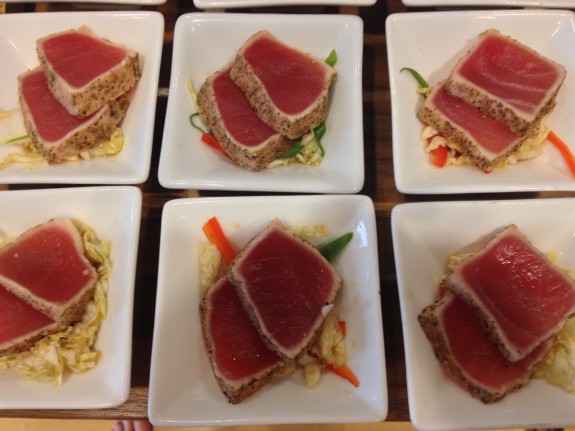
"Seared Ahi Tuna with Wasabi Vinaigrette" from Diet Simple: 195 Mental Tricks, Substitutions, Habits & Inspirations
my “Cool Cucumber Soup with Yogurt & Cilantro” from Diet Simple Farm to Table Recipes: 50 New Reasons to Cook in Season”…
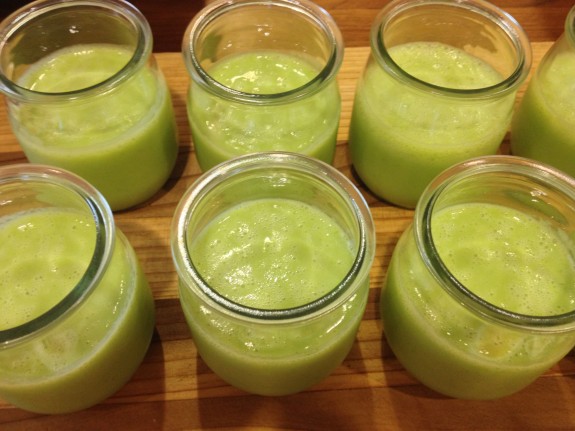
"Cool Cucumber Soup with Yogurt & Cilantro" from Diet Simple Farm to Table Recipes: 50 New Reasons to Cook in Season
and my “Melon Chunks with Crumbled Feta and Fresh Mint” (see recipe below) from Diet Simple Farm to Table Recipes: 50 New Reasons to Cook In Season”
A great time was had by all and everyone chose a plan of action to incorporate a new healthy habit into their lives. Now that’s transforming lives!
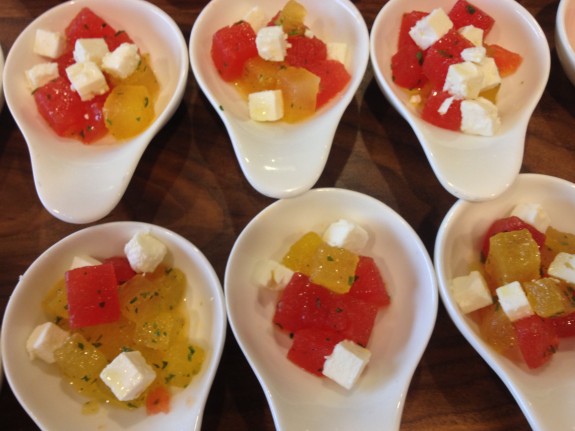
"Melon Chunks with Feta and Mint" from Diet Simple Farm to Table Recipes: 50 New Reasons to Cook in Season
Melon Chunks with Crumbled Feta and Fresh Mint
This is an unusual combination of flavors and textures, and a delight on the palate. Use any kind of melon that happens to be in season.
Serves 8
2 pounds melon chunks (about 1 small cantaloupe or seedless watermelon)
½ pound Feta Cheese or other similar cheese
8 small mint leaves, Chiffonade (Basil will also work)
Combine ingredients in a large bowl and serve!
Surviving the Heat with the Right Fluids
- At July 24, 2013
- By Katherine
- In Articles, News
 1
1
This article appeared in The Huffington Post
I’ll never forget volunteering at the Marine Corps Marathon’s Finish Line Emergency Tent. The experience was horrifying and exhilarating at the same time.
I spoke at the marathon’s scientific conference the day before, and the other speakers — dedicated medical specialists who came from around the world — were amazing. Their expertise and dedication saved many lives at the marathon.
But what is seared in my brain forever are the exhausted runners stumbling into the emergency tent on the verge of death: Forced into ice-water baths, several doctors surrounding each tub struggling to get IVs into the runners to save their lives. It was heat stroke.
The runners were frighteningly disoriented: delicate young women and huge, strong men were screaming, cursing, defecating (the room reeked); they couldn’t remember their own names, let alone birth dates. After some time in the painful icy water, once their body temperatures were lowered, they were whisked off in waiting ambulances to nearby hospitals. Everyone survived that day.
The most essential nutrient: water
Nutrients don’t only come in the form of food; water is the most important, and often most forgotten, nutrient. You can last for some time without food, but only days without water. Your lean body mass contains about 70 percent to 75 percent water, with fat containing much less: about 10 percent to 40 percent water. Because of increased muscle mass, men’s and athletes’ bodies contain more water than bodies with proportionately lower muscle and higher fat, such as non-athletic women, people who are overweight and people who are older.
Water is:
– The solvent for important biochemical reactions, supplying nutrients and removing waste.
– Essential for maintaining blood circulation throughout your body.
– The maintainer of body temperature. As you exercise, your metabolism and your internal body temperature increase.
Water carries heat away from your internal organs before serious damage occurs, which can lead to heat stroke, and even death. The heat travels through your bloodstream to your skin, causing you to sweat. As the sweat evaporates, this allows you to cool off and maintain a safe body temperature, optimal functioning and health.
Daily water intake must be balanced with losses to maintain total body water. Losing body water can adversely affect your functioning and health. Once you start feeling thirsty, you’ve probably lost about 1 percent of your body water and are dehydrated. With a 2 percent water loss, you could experience serious fatigue and cardiovascular impairments. It’s important to note that individual fluid needs differ depending on your sweat rate, the environmental temperature, your clothing, humidity and other factors.
Hydration tips
As summer temperatures hit, here are a number of important tips.
– Drink enough water to prevent thirst.
– Monitor fluid loss by checking the color of your urine. It should be pale yellow and not dark yellow, too smelly or cloudy.
– For short-duration (less than 60 minutes), low-to-moderate-intensity activity, water is a good choice to drink before, during and after exercise.
– Any time you exercise in extreme heat or for more than one hour, supplement water with a sports drink that contains electrolytes and 6 percent to 8 percent carbohydrates. This prevents “hyponatremia” (low blood sodium), which dilutes your blood and could also lead to serious impairment and death.
– Begin exercise well-hydrated. Drink plenty of fluids the day before and within the hour before, during and after your exercise session.
– Avoid alcohol the day before or the day of a long exercise bout, and avoid exercising with a hangover.
– Consider all fluids, including tea, coffee, juices, milk and soups (though excluding alcohol, which is extremely dehydrating). The amount of caffeine in tea and coffee does not discount the fluid in them, even if they have a slight diuretic effect, according to the most recent report by the National Research Council’s Food and Nutrition Board.
– Eat at least five cups of fruits and vegetables per day for optimum health, as they all contain various levels of water and the all-important nutrient potassium.
– During exercise, for those who experience high sodium losses, eat salty foods in a pre-exercise meal or add an appropriate amount of salt to sports drinks consumed during exercise. Orange juice is high in potassium. Dilute juices, such as V-8 or orange juice, 50/50 with water so that the drinks are 6 percent carbohydrate solutions (the same as sports drinks), which will empty from your stomach quicker than 100 percent juice (juices are naturally 12 percent solutions), allowing the electrolytes and water to quickly reach your heart and organs.
– Following strenuous exercise, you need more: Protein to build muscle, carbohydrates to refuel muscle, electrolytes to replenish what’s lost in sweat, and fluids to help rehydrate the body. Low-fat chocolate milk is a perfect, natural replacement that fills those requirements.
– You can also replace fluid and sodium losses with watery foods that contain salt and potassium, such as soup and vegetable juices.
– For long hikes, when you’ll need food, dried fruit and nut mixtures contain high amounts of potassium, sodium, protein, carbs and calories — though continue to drink plenty of water.
– To determine your individualized need for fluid replacement: During heavy exercise, weigh yourself immediately before and after exercise. If you see an immediate loss of weight, you’ve lost valuable water. Drink 3 cups of fluid for every pound lost; use this figure to determine the amount of water (or sports drink) you’ll need to drink before and during your next exercise session to prevent weight/water loss in the future.


![Park Road Hoops[1]](https://katherinetallmadge.com/wp-content/uploads/2013/08/Park-Road-Hoops1-e1377855570384.jpg)
![Reading Corner[1]](https://katherinetallmadge.com/wp-content/uploads/2013/08/Reading-Corner1-e1377855653225.jpg)
